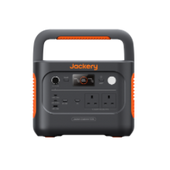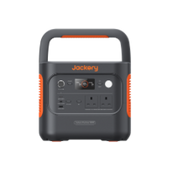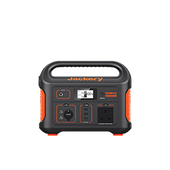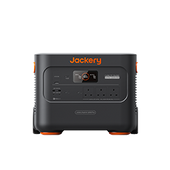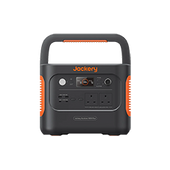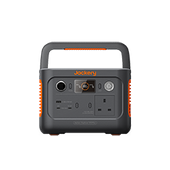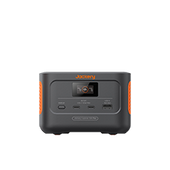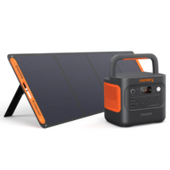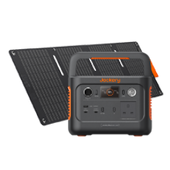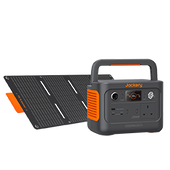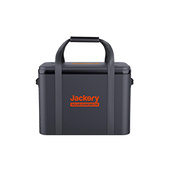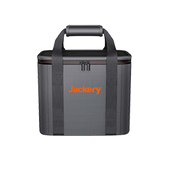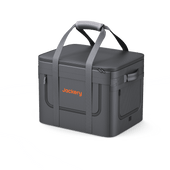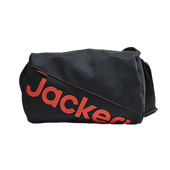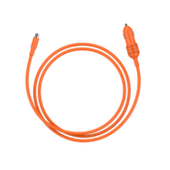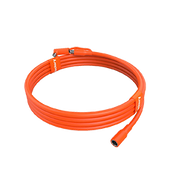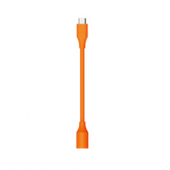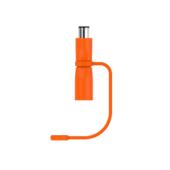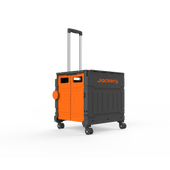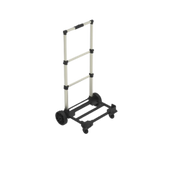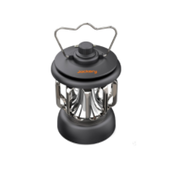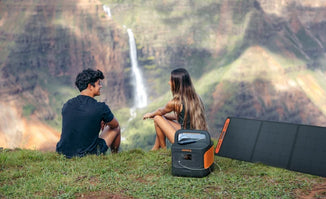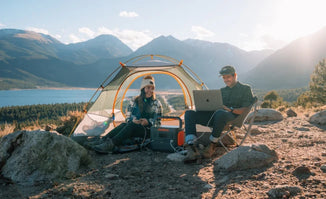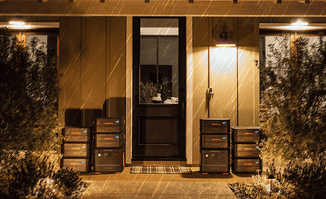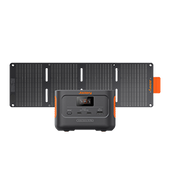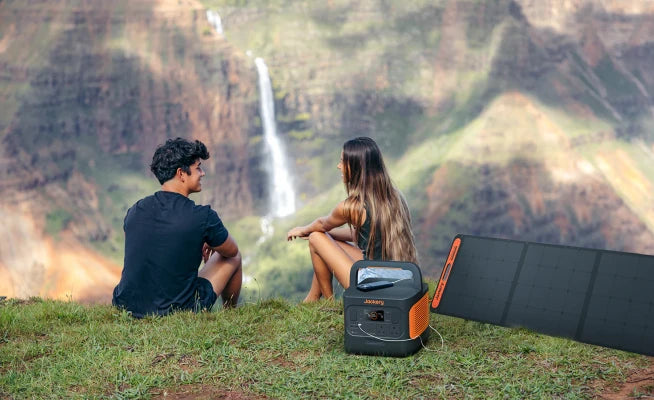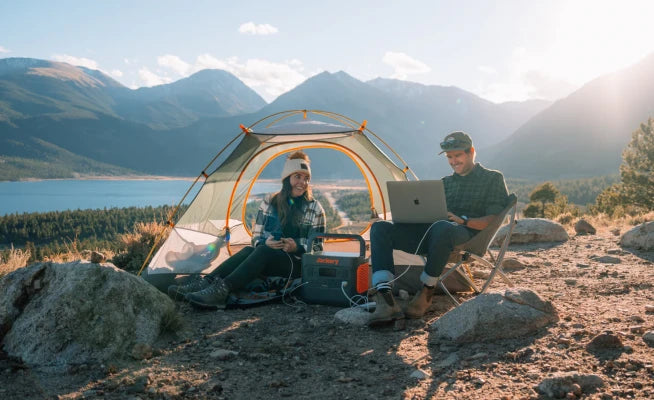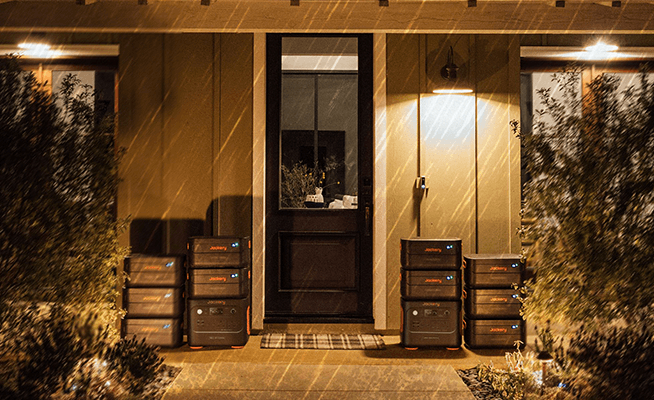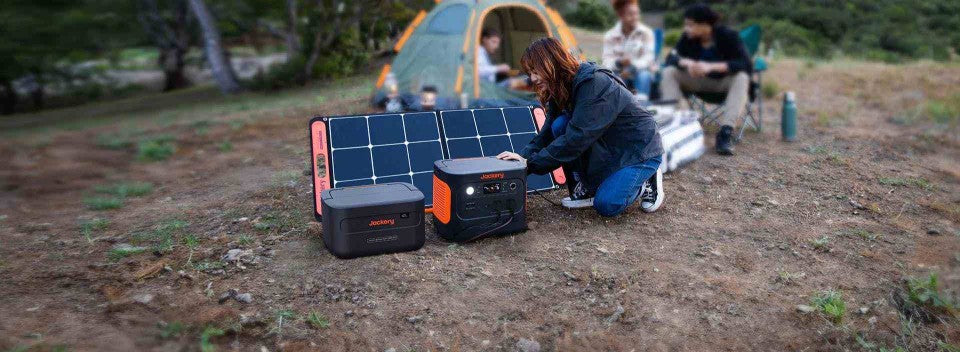The Lake District is famous for its beautiful lakes and natural beauty, which makes it one of the top places in the UK for kayakers of all skill levels. There are calm streams that are great for beginners and tough whitewater rivers that are great for expert paddlers.
It's easier than ever to explore the region's waterways, thanks to well-kept access sites, family-friendly paths, and numerous kayak rental locations. To get the most out of kayaking in the Lake District, you need the right gear, a good understanding of safety rules, and a well-planned trip.
|
Key Takeaways: |
|
● The Lake District offers a wide range of kayaking destinations, from serene lakes to thrilling whitewater rivers, catering to individuals of all skill levels and interests. ● It's essential to check the weather and water conditions before kayaking because the environment in this area changes quickly, and the river flows can be unpredictable. ● Bringing waterproof clothes, dry bags, and portable power sources like the Jackery Explorer 240 v2 portable power station makes being on the water more comfortable and convenient. ● Advanced paddlers can have a lot of fun whitewater kayaking in the Lake District on rivers with rapids and strong currents. |
Why Go Kayaking in the Lake District?
The Lake District is one of the UK's most beautiful and exciting places, making it perfect for kayakers of all ability levels. This area offers a unique and enjoyable paddling experience, featuring calm lakes ideal for beginners and wild rivers perfect for more experienced paddlers.
Kayaking in the Lake District is easy to get to and beautiful at the same time. There are plenty of places to rent equipment and go on guided adventures. It's not simply a water sport; it's also a chance to explore the national park's scenery in a new and tranquil way.
A National Park That Welcomes Kayakers
You can kayak on Windermere, Coniston Water, Derwentwater, and Ullswater, which are all prominent lakes in the Lake District. Dedicated launch points and rules for each lake make it easy for paddlers to get out on the water safely. The National Park Authority encourages paddle sports on its lakes as long as participants obey the rules for safety, wildlife protection, and sharing the water.
A Variety of Experiences for All Skill Levels
Grasmere, Buttermere, and Wastwater are all calm waters that are great for novices since they are great for practising and having fun. When the weather is appropriate, experienced kayakers can try their abilities on long-distance lake routes or whitewater rivers like the River Greta or the River Kent.
Easy Equipment Hire and Guided Adventures
You don't need to own a kayak to enjoy the water. Many rental companies in the area carry a wide range of boats, paddles, buoyancy aids, and dry gear. Guided kayaking lessons with licensed instructors are often available and are great for beginners, families, and anybody who wants to get better at kayaking in a safe environment.
Best Places to Kayak in the Lake District
The Lake District has some of the most beautiful and varied waterways in the UK, making it an excellent place for kayakers. There are vast, wide lakes that are great for long-distance paddling and quiet tarns and rivers that are great for solitude and wildlife watching. Every paddler can find their route.

Windermere – The Largest and Most Versatile
Windermere is the biggest natural lake in England and a great site to go kayaking in the Lake District. It has open water that is great for kayaking long distances and jumping from island to island. There are many places where the public can go, such as Miller Ground and Fell Foot. There are also kayak rental shops nearby that are easy to get to. Although the summer and winter are the busiest times, the early morning and shoulder seasons offer quieter exploration.
Derwentwater – A Perfect Blend of Scenery and Access
Derwentwater, in Keswick, is surrounded by beautiful fells and wooded islands, making for a great and varied kayaking experience. The lake is excellent for beginners and families because it has easy entry locations, calm seas, and is safe. Kayakers can go to quiet harbours and paddle over to the lake's many little islands.
Ullswater – Long and Scenic Adventures
Ullswater is known for its long and narrow shape, which makes it great for lengthy linear kayaking trips. There are steep hills all around the lake, which make for stunning views. There are also many places to launch, like Glenridding and Pooley Bridge. The wind and changing surface conditions make it a favourite among intermediate paddlers.
Coniston Water – Great for Beginners and Families
Coniston Water is another excellent place to go kayaking since it has sheltered bays, sloping shorelines, and launch spots that are safe for families. It's a calm and easy place for anyone who is new to kayaking or just wants to relax while paddling. You can hire kayaks and safety gear from places nearby, which makes it easy to plan a last-minute trip.
Buttermere and Crummock Water – Peaceful and Remote
Buttermere and Crummock Water are smaller and less well-known lakes that are great for folks who wish to be alone and have a more wild experience. Access may be harder, but the payoff is a tranquil paddle among undisturbed nature and wildlife. People like to paddle on these lakes early in the morning when the mist and reflections make the scene more interesting.
River Derwent and Greta – For the Experienced Paddler
Some parts of the River Derwent and River Greta offer mild to moderate whitewater kayaking, which is excellent for people who want a more difficult experience. These routes require the right skills and gear, yet local paddlers like them for their flow and tricky characteristics.
Whitewater Kayaking in the Lake District
The Lake District has more than just calm lakes. It also has some of the best whitewater kayaking in the Lake District, with fast-flowing rivers and exciting rapids that attract thrill-seekers from all over the country.

Popular Rivers for Whitewater Kayaking
Kayakers looking for arduous journeys choose rivers like the River Kent, River Greta, and River Derwent because they include whitewater sections. These rivers contain rapids that are easy to hard, so they are fun for both expert paddlers and people who want to spend their days on the water with lots of adrenaline. The diverse terrain and natural beauty of the nearby fells make these places both beautiful and challenging to visit.
Seasonal Conditions and Safety
The weather and river levels change every year, so whitewater kayaking in the Lake District depends a lot on these things. Before planning a vacation, make sure to verify the current water levels and forecasts, since peak seasons typically come after a lot of rain. Because these rivers are so tricky, paddlers should have the right skills and safety gear, and they should try to kayak with other people or join organised groups.
Guided Trips and Instruction
Many outdoor centres and guiding companies offer classes, guided trips, and equipment rentals for individuals new to whitewater kayaking or unfamiliar with the rivers in their area. These services have experts who know about river conditions, safe routes, and how to paddle, which makes whitewater kayaking easier to do and less dangerous. Group expeditions often include training with the chance to safely and enjoyably encounter famous Cumbrian whitewater runs.
Respecting the Environment and Local Regulations
Kayakers should be aware of environmental issues in the area, avoid vulnerable riverbanks, and adhere to any access rules in place to protect species and habitats. Respecting landowner rights and using sustainable kayaking techniques helps ensure that these rivers remain open to future paddlers.
Accessing the Lakes: What You Need to Know
Before going kayaking in the Lake District, it's essential to know where you can go, where you can launch your kayak, where you can park, and how to share the lakes peacefully with other people. Most of the area's big lakes allow paddlesports, which is good news. Planning will make sure everything goes smoothly.
Knowing where to go, what the rules are, and how to get ready will help you have a safer and more fun kayaking experience while also protecting the environment.

Public Access to Major Lakes
Most of the Lake District's big lakes, such as Windermere, Derwentwater, Coniston Water, Ullswater, and Bassenthwaite Lake, are suitable for kayaking. There are places along the shore of each of these bodies of water where the public can access and launch their kayaks without needing any special permission or paying any costs. Some lakes, such as Ennerdale Water, Thirlmere, and Haweswater, have limits or require landowner permission because they are located on private or utility-owned land.
Recommended Launch Sites
The Lake District National Park Authority suggests secure and open-to-the-public launch sites.
Fell Foot and Miller Ground on Windermere, Keswick landing stages on Derwentwater, and Glenridding and Pooley Bridge on Ullswater are all popular places to launch. There is parking near several of these places, but it may be limited during the busy season, so get there early.
Sharing the Water with Others
To ensure safe and respectful use of the lake, kayakers are requested to follow a voluntary code of conduct. This means not getting too close to swimmers, rowers, or motorboats and not bothering wildlife like nesting birds or fish spawning sites. To keep the lakes looking nice, there shouldn't be too much noise, and trash should be picked up.
Access on Rivers and Other Waterways
Accessing rivers in the Lake District is more challenging due to the lack of agreed-upon launch spots and potential legal issues in certain areas. People like to paddle on rivers like the Derwent and Greta when the flow is good, but it's essential to check the water levels and route details ahead of time. It is recommended that you have experience with moving water and have the proper safety gear when using these routes.
Practical Considerations and Equipment
For safe canoeing, especially on lakes that are far away or not well established, you need dry bags, waterproof maps, and buoyancy aids. Some kayakers use inflatable kayaks to make it easier to get to the lake and get around when cars can't get there. Everyone can get to the area if they follow parking rules, local signs, and temporary closures.
When's the Best Time to Go Kayaking in the Lake District?
The time of year you choose to kayak in the Lake District can have a significant effect on how much fun you have. To get the most out of your trip, consider the weather, water conditions, and the number of other people who will be there.

Ideal Seasons for Kayaking
Kayaking is most popular from late spring to early autumn, when the weather is warmer and the days are longer. This is usually from May to September. During these months, the weather is more stable, the waters are calmer, and the conditions are better for families and beginners. Summer brings in more people, making the lakes quieter in the early morning or on weekdays.
Weather Considerations
The weather in the Lake District is unpredictable, with frequent rain, so be sure to check the forecast before heading out. Calm, sunny days are the best for paddling and taking in the sights. However, you may also kayak on cloudy days if you have the necessary waterproof gear. Wind can change the surface of a lake, generating waves and making it harder to paddle, especially on bigger lakes like Windermere.
Water Levels For Whitewater Kayaking
The availability of whitewater kayaking on Lake District rivers largely depends on rainfall and river flow, which is typically at its highest in autumn and winter. Experienced paddlers often go for exciting runs in the rainy months, while beginners prefer the calmer summer conditions on the lakes.
Avoiding Peak Crowds
Kayaking during the shoulder seasons, like late April or early October, might be a good idea because the waterways are quieter and there are more places to park. Weekdays when school isn't in session are also less hectic, which makes for a more pleasant time.
Preparing for All Conditions
No matter what time of year it is, it's ideal to wear layers, have waterproof gear, and have safety gear like life jackets with you to stay comfortable and safe on your trip. Before heading out on the lake, check the local weather and water conditions to ensure a safer and more enjoyable day.
What to Pack for a Kayaking Trip?
Suppose you want to have a safe, comfortable, and entertaining kayaking trip in the Lake District. In that case, you need to pack the right kayaking gear, whether you're paddling on calm lakes or more difficult waterways.

Essential Clothing and Safety Gear
Choose gear that is waterproof and dries quickly to stay comfortable in the Lake District. This is especially important because the weather changes so often. Layers help keep your body temperature stable, while a waterproof jacket keeps you dry in case of sudden rain or water spray.
For safety, a life jacket or buoyancy aid that fits well is necessary, and many kayak rental companies require it. Neoprene boots or water shoes are outstanding examples of shoes that are waterproof and have a high grip.
Equipment and Accessories
It's a good idea to bring a dry bag to keep your phone, wallet, and food secure and dry. Wearing a hat, sunglasses, and sunscreen can help protect you from UV rays even when the sky is cloudy. Snacks that are full of water and energy will keep you hydrated and fed as you travel.
Technology and Power Needs
Portable power stations like the Jackery Explorer 240 v2 are great for people who want to keep their gadgets charged while they're on the go. They provide reliable energy solutions, allowing you to use your cameras, phones, and GPS units on the go. For long trips or rural areas where electricity is hard to come by, small power stations are the best choice.
Optional Extras for Comfort and Convenience
When kayaking in more remote areas or harsh conditions, some people bring a first-aid kit with them. A map or GPS device can help you find your way, especially on long trips or in waters you don't know. Waterproof tents and camping gear designed for wet conditions are helpful whether you're camping or staying overnight.
Jackery Portable Power Station for Kayaking
The Lake District is a National Park known for its stunning, but often remote, landscapes. While some popular lakes like Windermere and Ullswater have facilities, many areas are "off the grid." A portable power station, like the Jackery Portable Power Station, allows you to have a reliable power source even when you're miles from a plug socket.
It can help power your phone for communication and emergency calls, serve as a headlamp for navigating at dusk or in the dark, and function as a GPS device for navigation and safety on the water or land. If you are combining kayaking with camping, consider powering essentials like portable coolers, a small fan, or even a mini-fridge.
Forget queuing for the single power outlet in a campsite toilet block. A power station gives you independence and convenience.
Jackery Explorer 240 v2
Taking a Jackery Explorer 240 v2 for kayaking in the Lake District can be a great idea, especially if your trip extends beyond a single day or if you rely on electronic devices—the reasons centre on its ability to provide portable power in a remote, outdoor environment.

Charging Essential Electronics: The Lake District is vast, and while you'll likely have your phone for communication and navigation, you'll need to keep it charged. The Jackery 240 v2's 256Wh capacity can charge a typical smartphone multiple times.
Powering Navigation and Safety Gear: You might be using a GPS device or a headlamp for a late paddle or setting up camp. A power station ensures these critical items remain functional, which is vital for safety, especially in more remote areas like Ennerdale Water or Wastwater.
Emergency Preparedness: In the event of an unexpected situation or a change in the famously unpredictable Lake District weather, having a reliable power source for communication and lighting can be a lifesaver.
Lightweight and Compact Design: The Explorer 240 v2 is easy to carry since it weighs only 7.94 lbs (3.6 kg). This makes it easy to transport in a dry bag and store in your kayak, which is crucial since you'll have limited room.
Built for Outdoor Use: The v2 model features a durable LiFePO4 battery, which is known for its long life and reliability. The power station is also built with a protective shell and a carrying handle, making it suitable for the bumps and splashes of an outdoor trip.
|
Jackery Explorer 240 v2 Running Time |
|
|
Phone (29W) |
11 Times |
|
Light (5W) |
14H |
|
Camera (10W) |
10 Times |
|
Portable Fridge (60W) |
3H |
|
Drone (90W) |
4.5 Times |
(*The working hours are only for reference; the actual working hours depend on your usage.)
Kayaking in the Lake District: Safety Tips and Rules
Because the Lake District has many types of water and weather that can change quickly, safety should always come first when kayaking. Knowing the laws and best practices in your area will help both new and expert paddlers have a safe and enjoyable time.

Understand and Follow Local Regulations
The Lake District National Park authority sets rules for where kayaks can legally enter lakes and rivers to protect the environment and keep people safe. It is crucial to start from areas where you are permitted and avoid those where you are not, as these typically safeguard fragile wildlife habitats or private property. This will reduce your influence on the environment and prevent conflicts with landowners.
Following these rules not only protects delicate ecosystems, but it also helps paddlers get along with the people who live there, which means everyone will be able to use the area for a long time.
Always Wear Proper Safety Gear
No matter how good you are at swimming or how calm the lake is, it's essential to wear a properly fitted buoyancy aid or life jacket. Helmets are an important part of safety gear for whitewater kayaking areas, like rivers with rapids or fast currents, to protect against head injuries from rocks or other dangers.
Make sure your safety gear is in good shape and works for the kind of kayaking you want to undertake. This can significantly lower risks and make you feel more at ease while paddling.
Monitor Weather and Water Conditions Carefully
The weather in the Lake District changes quickly, with sunshine giving way to rain and high gusts. Because of this, it's vital to check detailed local weather forecasts before you go out. Rain can alter the water levels in rivers and lakes, making kayaking more challenging and hazardous, particularly for those who prefer to kayak on whitewater or in waterways.
To be safe and have a good time, don't paddle when the water is flowing quickly, the wind is strong, or there are official weather warnings.
Plan Your Route and Keep Someone Informed
Before you put your kayak in the water, make sure you have a detailed plan for where you're going, taking into account your skill level, the weather, and the water conditions. Letting a friend or family member onshore know your planned route and estimated return time is an important safety measure because they will know where to look for you in case of an emergency.
This method is essential for people who kayak alone or in remote or less travelled areas where help may not be close by.
Practice Safe Paddling and Watercraft Awareness
Kayakers need to be aware of other people using the water on lakes and rivers. To prevent crashing into swimmers, motorboats, paddleboards, and sailing boats, they should stay a safe distance away from them. Knowing and observing the right-of-way legislation for boats and paddlers, as well as talking to other paddlers or boaters in the right way, makes it easier to get around and keeps accidents from happening.
Good paddling technique and being aware of your surroundings will help you save energy, stay in control, and react swiftly to changes in the water.
Respect the Environment and Wildlife
Everyone has a responsibility to protect the Lake District's natural beauty; thus, kayakers should stay away from indigenous species and their breeding and feeding areas. Taking all your trash and belongings with you when you leave helps keep lakes and shorelines clean for future generations to enjoy.
By limiting damage to shorelines and vegetation, using allowed launch and landing locations protects sensitive areas from erosion and habitat loss.
FAQs
The following are the frequently asked questions about kayaking in the Lake District:
1. Do you need a permit to kayak on Windermere?
Suppose you launch your kayak from one of the designated public access locations. In that case, you don't need a permit to kayak on Windermere. But paddlers must observe the Lake District National Park's rules, such as launching only at designated areas, avoiding animal habitats, and adhering to the lake's specific regulations, to ensure they use the water safely and responsibly.
2. Is it safe to kayak on Windermere?
People who are ready to kayak on Windermere are typically safe, although the weather may change quickly. Winds and boats, particularly during busy months, may make the sea choppy. For a safer and more pleasant experience, it's essential to wear a life jacket, have safety gear, check the weather, stay away from swimmers and ferries, and go early in the morning or on calmer days.
3. Which lake in the Lake District has the best views?
People have different ideas about what is beautiful, but Derwentwater is often praised for its dramatic scenery, which includes jagged fells and wooded islands. Ullswater is known for its classic "Lake District landscapes," and Windermere stands out with its wide views and islands in the water—each of these places has some of the most famous and beautiful kayaking backdrops in the area.
4. Which lake in the Lake District has the best views?
Wastwater. The view down Wastwater is iconic and has been voted as the UK's best view on multiple occasions! The deepest lake in the Lake District, Wastwater, is situated in the Wasdale Valley, which is also home to England's tallest mountain and one of England's smallest churches.
5. Which is the cleanest lake in the Lake District?
Enjoy a refreshing dip in its waters before embarking on a day full of adventure. What is the cleanest lake to swim in the Lake District? The cleanest wild swimming spot in the Lake District is Ullswater. Renowned for its crystal clear waters, Ullswater is a pristine wild swimming spot in the Lake District.
Final Thoughts
Kayaking in the Lake District is a great chance to enjoy both the excitement of outdoor adventure and the peace of some of England's most beautiful waterways. It's an unforgettable experience for paddlers. You can enjoy every moment on the water while safeguarding this beautiful environment by choosing the right spots, bringing the right gear, and obeying local safety rules.

